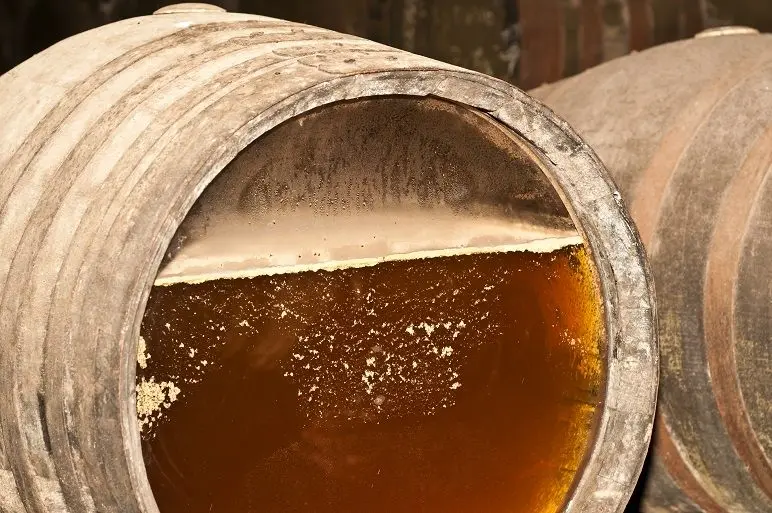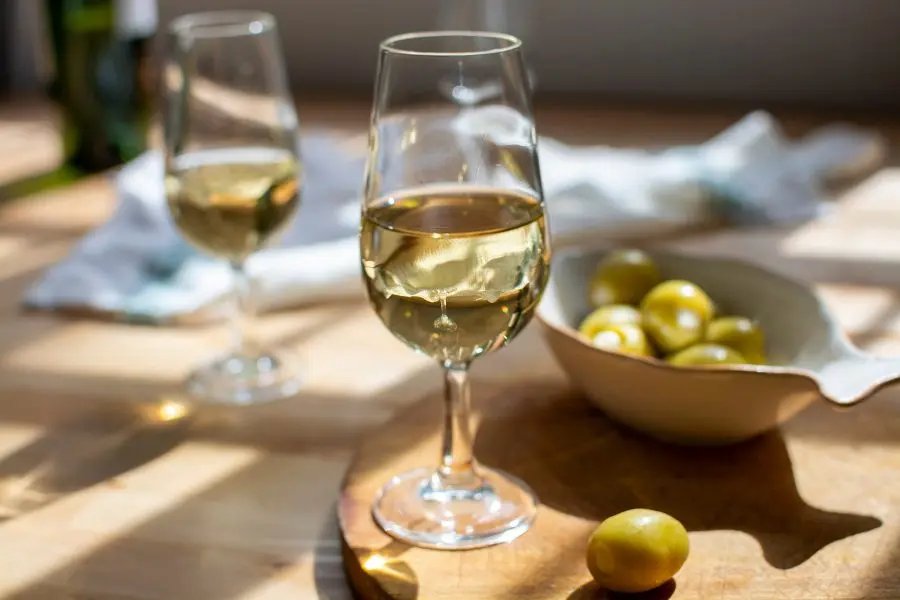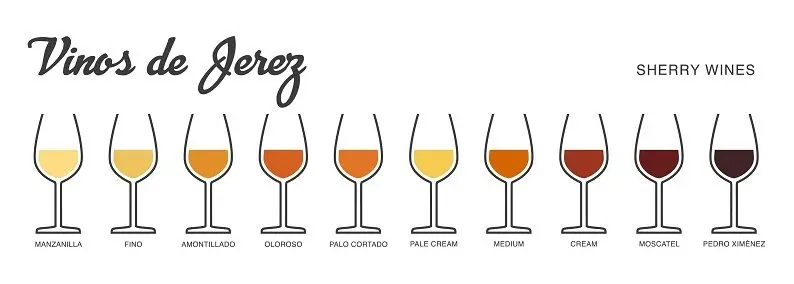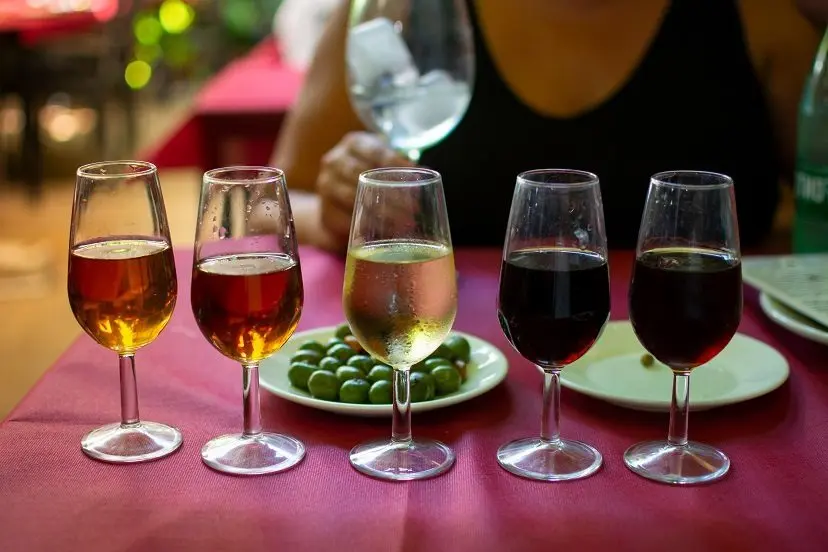Sherry is considered the king of aperitifs, but it can be served at any time during the meal. Unlike other wines, sherry goes well with smoked meat and fish, fatty dishes do not interrupt its rich taste. Next, we will talk about the rules for drinking sherry and the most suitable appetizer for it.
Sherry (English name Sherry “sherry”) is a fortified Spanish wine with a strength of about 20 degrees and a sugar content of 2-3%, produced in Andalusia from white grapes. It has a persistent aroma and a characteristic tart aftertaste with different notes, depending on the type and manufacturer of the drink.
Sherry requires the ripest grapes to produce, so the berries are harvested several times when they reach their maximum sugar content. For sweet varieties of the drink, before crushing the juice, the berries are dried in the sun on straw mats, sometimes the process takes up to two weeks. Then the grapes are sprinkled with a small amount of gypsum and the juice is crushed, which is fermented in barrels or stainless steel tanks. If it is not initially required to obtain oxidative (oxidized) sherry, special sherry yeast is added – flor (from Spanish flor – flower), which forms a film on the surface that protects the must from contact with oxygen – oxidation.

First, the must, and after the end of fermentation, the already young wine is in the barrel for more than a year, then the chief specialist determines what type of sherry it is suitable for: Fino and Manzanilla (under flor) or all the others (without flor, contact with air and oxidize). The wine is gradually fixed with grape alcohol 96% by volume, first the alcohol is diluted with an equal amount of wine, then the operation is repeated so as not to “shock” the drink with one addition.
Species Fino and Manzanilla fortify up to a maximum of 15,5% vol., otherwise a high concentration of alcohol will kill the flor, the rest of the species fix up to 17% vol., if there was a flor in the barrel, it dies. Sherry spends 6-12 months in incomplete barrels before aging. Most types of sherry are aged according to the Criadera and Solera system (dynamic aging), the rest are simply kept in barrels (static aging).

Features of sherry under flor:
- almost does not darken – oxidation is the main reason for the darkening of wine, and flor protects the drink from contact with oxygen;
- lower fortress – flor processes some of the alcohol;
- the minimum content of glycerin – flor eats glycerin, thanks to which notes of dry sherry are better revealed;
- a higher content of vitamins, amino acids and proteins – sooner the flor dies out of late, its remains sink to the bottom in the form of useful additives that end up in the finished wine.
Rules for the use of sherry
1. Glasses. It is advisable to drink sherry from special oblong glasses in the form of a tulip. But this pleasure can only be afforded in Spain or in expensive restaurants. At home, ordinary wine glasses are suitable, the taste will not change.

2. Temp. Like any other wine, sherry does not like to be rushed. It is right to drink it in small sips, trying to catch the characteristic notes of taste.
3. Temperature and breakfast. Suitable dishes and the optimum serving temperature depend on the type of sherry being tasted. Therefore, first you need to carefully study the label, then look at the description of the drink.
Sherry types

Fino and Manzanilla are yellowish fortified wines with a fruity bouquet and nutty flavors, ideal for an aperitif. These sherries are cooled to a temperature of 5-10°C before serving. As an appetizer, soft cheeses, fish and other seafood are recommended.
Amontillado is an amber sherry with hints of almonds. Chilled to 10°C before serving, it can be eaten with soups, white meats or hard cheeses. An excellent choice for an aperitif.
Palo Cortado is a rare type of sherry that needs to be chilled to 16°C. It is drunk in small sips without snacks, replacing food with a good cigar.
Madium – served with pâtés or smoked meats, chilled to 10°C. It has a bright memorable taste.
Oloroso – this golden wine is dominated by hints of nuts, it is better to eat it with red meat. The optimum serving temperature is 16°C.
Cream is a dessert-type dark sweet wine served with cookies or other sweet pastries. Due to the high sugar content, meat or fish snacks are not suitable for it. Cool down to 13°C before use.
Pale Cream is a delicate wine served at 7°C. Snacks on poultry liver or fresh fruit.
Pedro Ximenez is one of the best dessert sherries with hints of raisins. It should be chilled to 13°C and served with blue cheeses or desserts. Only with this snack, the drink fully reveals its taste.
Massandra – Crimean sherry with a taste of bitter almonds, roasted nuts and cognac-vanilla tones. Pairs well with olives, vegetable salads and cheeses. The optimum serving temperature is 8-10°C.










